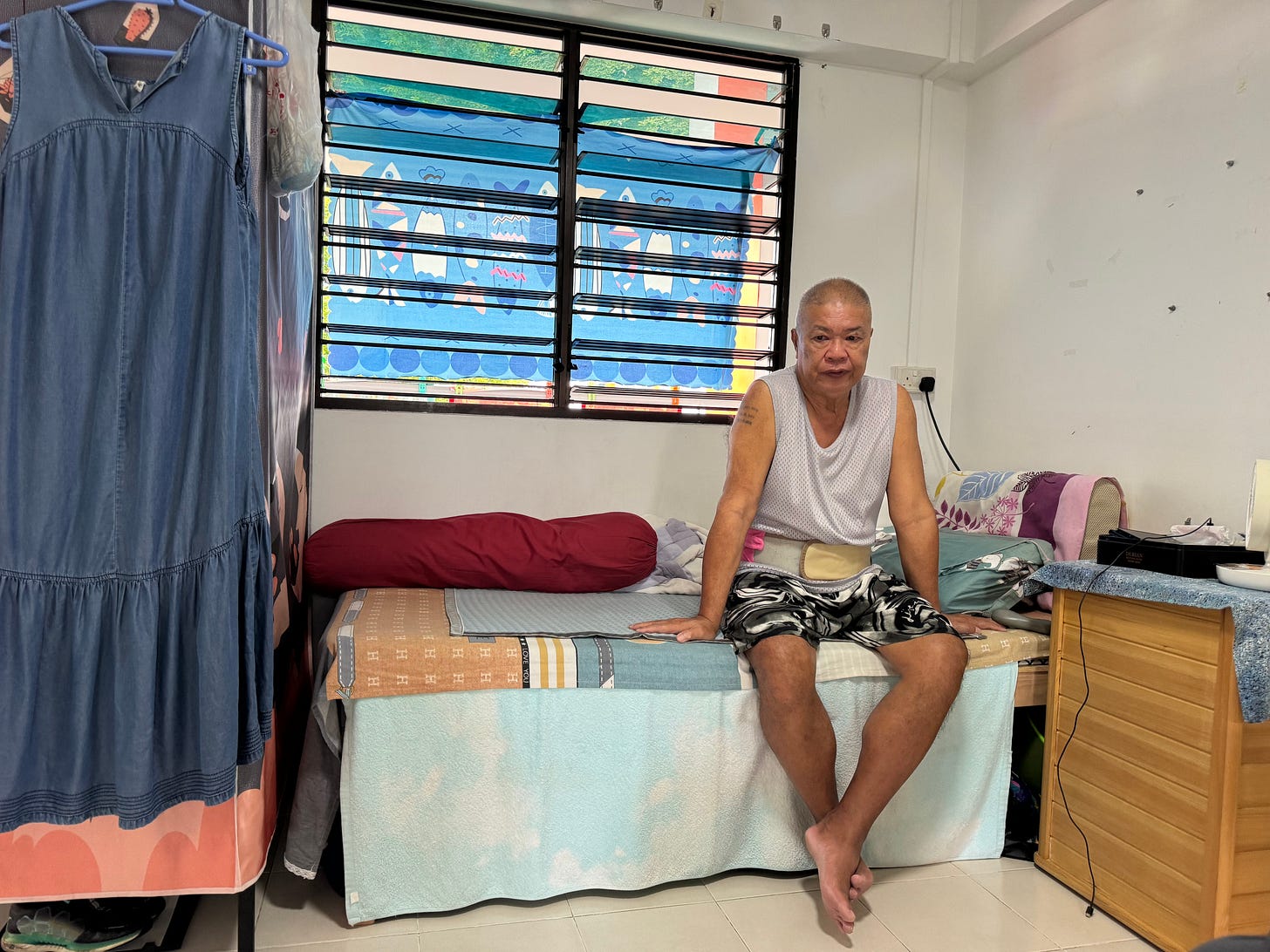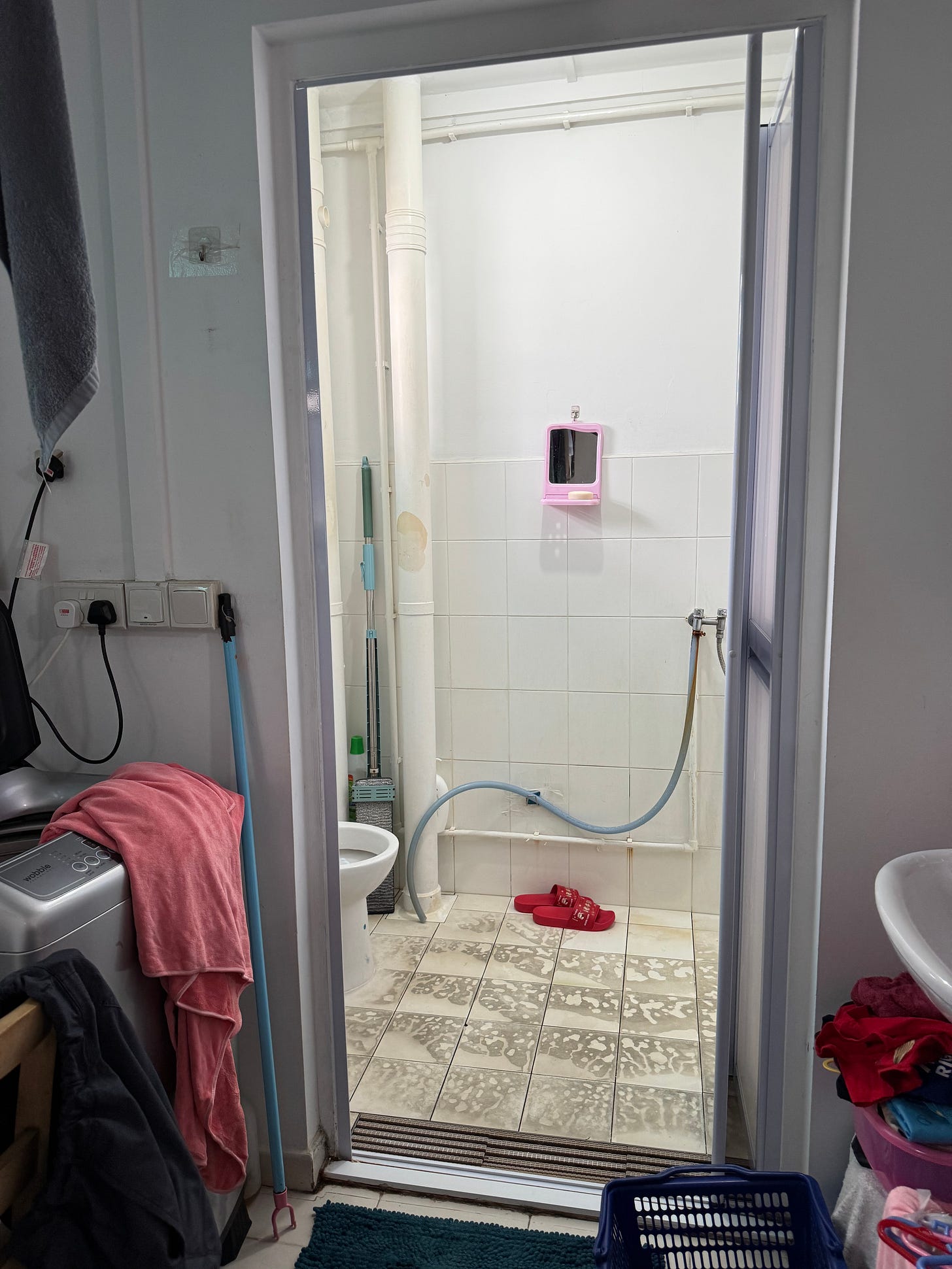A home should not feel like a cage
Cramped, unsafe, and filled with daily struggles. This is the reality for families living in Singapore’s rental flats.
I have spent over a decade in journalism, telling stories about business, technology, and media. But nothing prepares you for the weight of sitting in a room where survival is the only priority.
As a media and editorial consultant, I have worked with brands and agencies to shape resonated narratives. But no matter how compelling a campaign or brand’s positioning, some stories in the margins need more than words.
This is one of those stories.
This is about Project HomeLift, an initiative by Ray of Hope that seeks to transform Singapore’s rental flats into dignified, safe, and functional homes. It is about the people whose lives exist beyond the success stories we celebrate.
It is about Mdm Fauziah, a mother of five who runs a home-based business from a flat so small that her fridge is in the bedroom.
It is about Mr Chin, a 67-year-old who, after breaking his spine in three places, now lives in pain, confined to a space that does little to ease his suffering.
It is about how a roof does not always mean a home.
When space is a privilege, not a given
When I step into Mdm Fauziah’s two-room rental flat, I feel the sheer weight of the space, or rather, the lack of it.
There is no luxury of an uncluttered floor. Every available inch is occupied by life, mattresses stacked in the morning and laid out at night, clothes overflowing from overstuffed drawers, and kitchen essentials spilling into sleeping areas.
Her five children, all at different developmental stages, have never known what it is like to have personal space.
“We just make do,” she says. “The kids sleep wherever there is space. We keep our things outside in the corridor, but even that gets too full.”
She raises her children and runs her home-based food business, making and selling Roti Boyan to supplement her family’s income.
“I have no choice. How do we survive if I don’t work?” she says. “But my hands are not the same anymore.”
She holds them up, showing me the stiff, swollen joints. “Trigger finger,” she explains. “Some days, the pain is too much. But the bills don’t stop, so I keep going.”
There was an occasion when they could not pay the utility bills for two months, forcing her husband to sell one of his e-bikes, his mode of transport for food deliveries.
There is no proper storage or dedicated workspace; she is constantly battling to fit her entire livelihood into an overflowing home.
And yet, despite everything, she still gives.
“You cannot always take,” she tells me. “Sometimes, you must also give.”
A life once complete is now reduced to a single room
Mr Chin was once an independent, active man. He spent his days volunteering at the temple, helping others, and giving back. But one accident changed everything.
“I fell,” he tells me. “I broke my spine in three places. Now, I cannot sit too long or stand too long.”
He motions to his tiny, cramped flat. “Pain, always pain. But what to do?”
He now lives with chronic discomfort and is unable to work. His cleaner wife works long hours while their 12-year-old grandson does his best to help at home.
His bed is too small for his body, and his toilet floor is covered in mould, a constant hazard for someone already at risk of falling again.
“I don’t want to trouble anyone,” he says quietly. “People see I have a place to stay, but they don’t see what’s inside.”
There is no space for dignity or ease, only the reality of making do.
The reality of rental flats in Singapore
For those unfamiliar with Singapore’s rental flats, it is easy to assume that a home has just four walls and a roof. However, for many low-income families and elderly residents, these spaces are not designed for comfort, safety, or growth.
Children struggle to focus on their studies in overcrowded, chaotic environments. Elderly residents live in unsafe conditions, with high fall risks and poorly maintained interiors.
Families lack essential storage solutions, forcing them to keep belongings in corridors or stacked precariously.
A home should be more than a shelter. It should be a space for stability, security, and dignity.
But for many, that remains an unattainable dream.
Project HomeLift: Rebuilding homes, restoring dignity
That is where Project HomeLift comes in.
Led by Ray of Hope, in collaboration with Temasek Polytechnic’s School of Design and Yishun Family Service @ Children’s Society, this initiative aims to raise $50,000 to renovate eight rental flats, transforming them into spaces that genuinely serve the people who live in them.
Darryl Loh, Head of Case Management at Ray of Hope, says: “We don’t just want to provide one-time fixes. We want to create lasting change by ensuring families have homes that work for them so they can focus on building better futures.”
For Mdm Fauziah, this means an adequately equipped kitchen and storage solutions, so her business no longer competes with her children’s sleeping space.
For Mr Chin, it means a safe, waterproofed toilet floor and a bed that supports his spine, allowing him some relief from his daily pain.
Small changes have a significant impact.
Beyond renovations: Breaking cycles of hardship
The goal of Project HomeLift is to change lives, not just to beautify homes.
A child with a study desk is a child who can focus on their education. An elderly person with a safe bathroom can maintain independence. A mother with a functional home is a mother who can build a sustainable income.
As Loh explains: “We need to move beyond temporary aid. A stable home is the foundation for a better future.”
Yet, rental flats are just a symptom of a more significant issue: Systemic barriers that keep families trapped in poverty.
The need for a more significant shift
Singapore has made significant strides in tackling poverty, but many families still fall through the cracks.
Loh points out that most grants and assistance are means-tested, with strict qualifiers. While necessary, these criteria often exclude struggling families who do not meet the exact requirements.
In reality, poverty is about a lack of opportunities, not just about a lack of effort.
“If we see poverty as a personal failing, we create policies that focus on effort,” Loh explains. “But if we see it as a result of systemic inequities, we create policies that remove barriers.”
Until broader change happens, Project HomeLift is here to bridge the gap.
How you can help
We need your support to raise $50,000 to give these families a home they can be proud of.
$50 funds storage solutions, helping families organise their spaces.
$100 supports safe bathroom renovations, reducing fall risks for the elderly.
$500 contributes to beds, desks, and essential furniture for a family.
Every donation brings us closer to the following:
Giving children a dedicated study space
Providing elderly residents with a safer home
Restoring dignity to families through a functional living space
Mdm Fauziah remains hopeful despite everything.
“I don’t call myself poor,” she says, handing me her Roti Boyan to bring home. “Yes, life is hard, but we are still here. We must keep moving forward.”
Mr Chin, too, holds onto resilience.
“It is sad, but what to do?” he says. “At least we are still alive. That is enough.”
But we can do more.
Donate today. Help build a home that offers more than just a roof because home is where hope begins, not just four walls.








